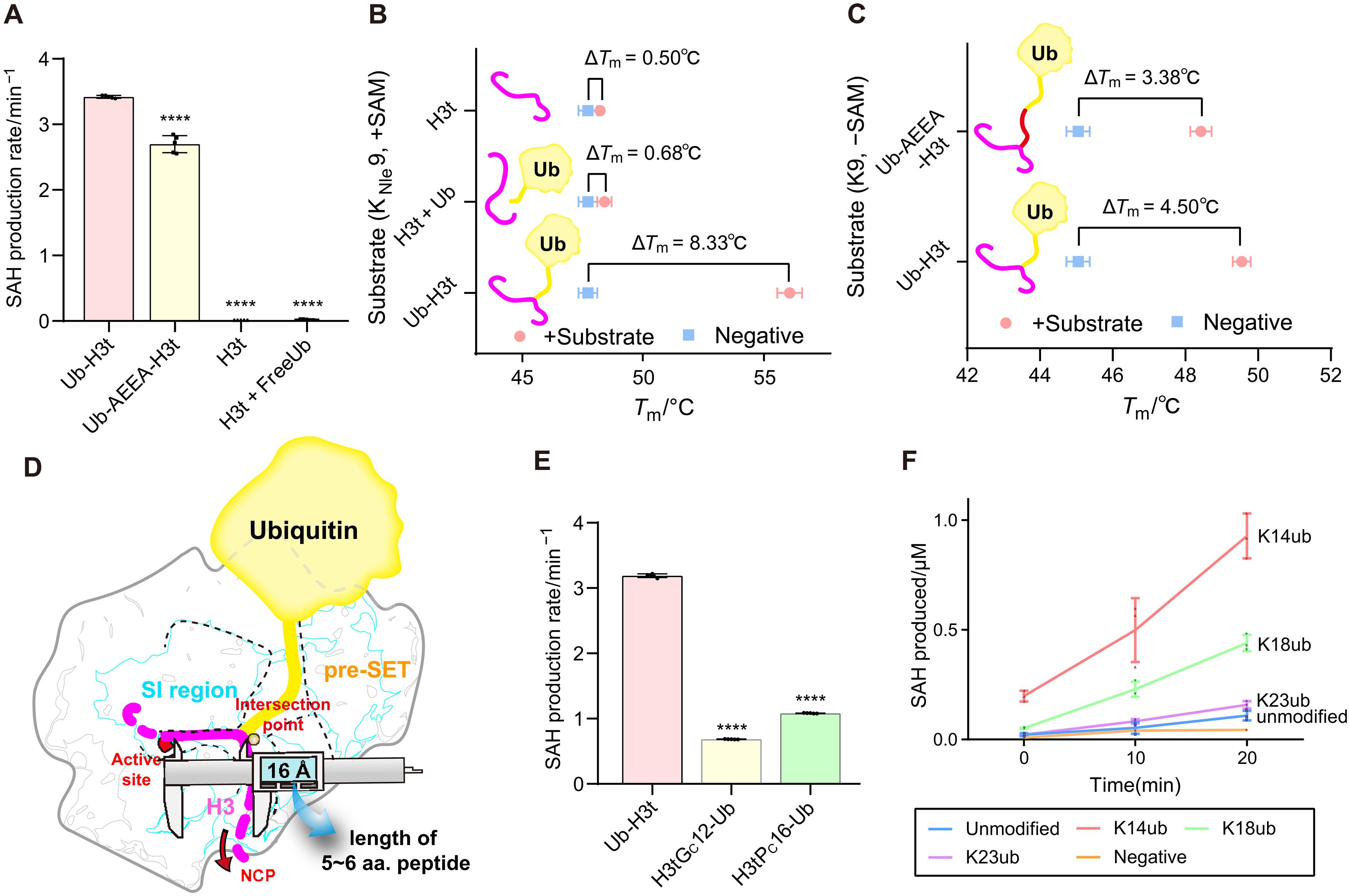近端H3K14泛素化刺激组蛋白H3K9甲基转移酶Clr4的机制
IF 12.5
1区 综合性期刊
Q1 MULTIDISCIPLINARY SCIENCES
引用次数: 0
摘要
H3K9甲基化是一个保守的异染色质标记,对染色体分离和基因调控至关重要。Clr4是唯一已知的在裂糖酵母中催化H3K9甲基化的甲基转移酶。Clr4 K455/K472自甲基化和H3K14泛素化(H3K14Ub)是Clr4的重要激活因子,确保适当的异染色质沉积并防止有害的沉默。虽然自甲基化的激活机制已被揭示,但H3K14Ub显著增强对Clr4的刺激机制尚不清楚。在这里,我们测定了Clr4在2.60和2.39埃时与泛素化和未修饰的H3肽结合的晶体结构,揭示了明显刺激作用背后的协同机制:H3K14Ub通过多价相互作用增加底物亲和力,并促进Clr4从无活性载脂蛋白构象到过度活跃的“催化状态”的变构转变,包括α c - et插入区、自调节环和β9/10环的构象变化。我们最后提出了Clr4催化调控循环的多层次结构模型。这项工作为组蛋白修饰及其对表观遗传调控的集体影响之间的相互作用提供了结构性的见解。本文章由计算机程序翻译,如有差异,请以英文原文为准。

Mechanistic insights into the stimulation of the histone H3K9 methyltransferase Clr4 by proximal H3K14 ubiquitination
H3K9 methylation, a conserved heterochromatin marker, is crucial for chromosome segregation and gene regulation. Clr4 is the sole known methyltransferase catalyzing H3K9 methylation in Schizosaccharomyces pombe. Clr4 K455/K472 automethylation and H3K14 ubiquitination (H3K14Ub) are vital activators of Clr4, ensuring appropriate heterochromatin deposition and preventing deleterious silencing. While automethylation’s activation mechanism is uncovered, the mechanism of H3K14Ub’s significantly stronger stimulation on Clr4 remains unclear. Here, we determined the crystal structures of Clr4 bound to ubiquitinated and unmodified H3 peptides at 2.60 and 2.39 angstrom, which revealed a synergistic mechanism underlying the pronounced stimulatory effect: H3K14Ub increases substrate affinity through multivalent interactions and facilitates the allosteric transition of Clr4 from an inactive apo conformation to a hyperactive “catalyzing state,” including conformational changes in the αC-SET-insertion region, autoregulatory loop, and the β9/10 loop. We finally propose a multilevel structural model for the Clr4 catalytic-regulatory cycle. This work provides structural insights into the interplay between histone modifications and their collective impact on epigenetic regulation.
求助全文
通过发布文献求助,成功后即可免费获取论文全文。
去求助
来源期刊

Science Advances
综合性期刊-综合性期刊
CiteScore
21.40
自引率
1.50%
发文量
1937
审稿时长
29 weeks
期刊介绍:
Science Advances, an open-access journal by AAAS, publishes impactful research in diverse scientific areas. It aims for fair, fast, and expert peer review, providing freely accessible research to readers. Led by distinguished scientists, the journal supports AAAS's mission by extending Science magazine's capacity to identify and promote significant advances. Evolving digital publishing technologies play a crucial role in advancing AAAS's global mission for science communication and benefitting humankind.
 求助内容:
求助内容: 应助结果提醒方式:
应助结果提醒方式:


